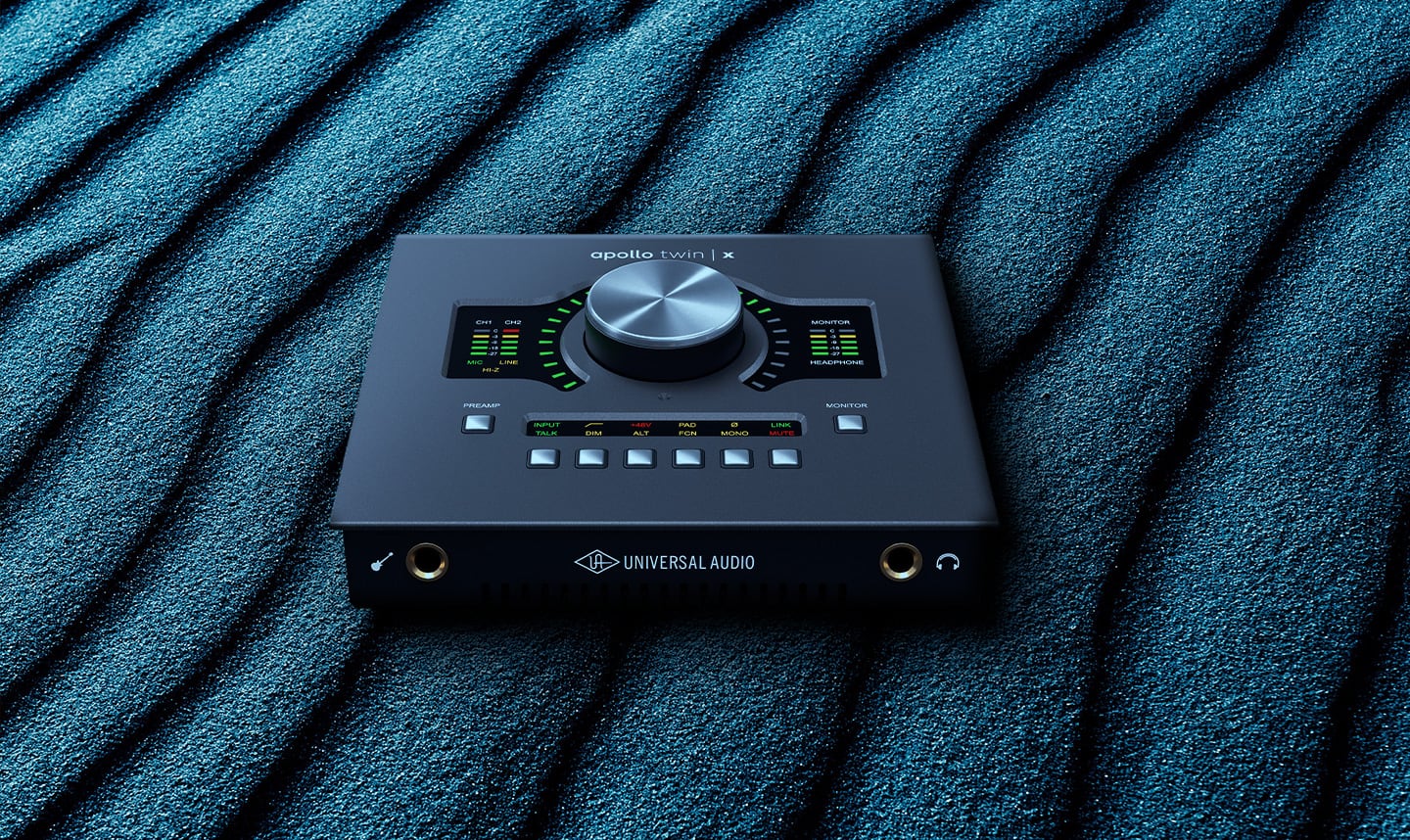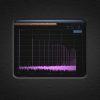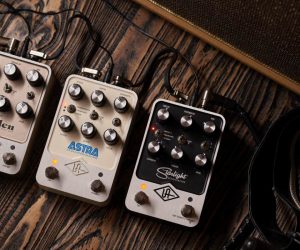
Universal Audio Apollo Twin X Thunderbolt Interface
UAD takes Apollo out of the rack and onto the desktop.
A studio in a box. That’s the basic premise of a Universal Audio interface. With the DSP-enabled line of Apollo interfaces, UA has done a fantastic job recreating the signal chain workflow of an outboard-laden analogue studio within a digital microcosm.
The UA Apollo Twin X is built on this idea, yet takes on a new outer shell. Of the many members in the Apollo family, the Twin X is the most compact. The sturdy desktop unit is less than a handspan across, totally backpack-able and rugged enough for an itinerant life.
It’s also Thunderbolt 3 so latency reaches new lows when tracking through UA’s emulations of prestigious outboard models. UAD-2 Duo processing is the brains of the DSP, letting you load up the plugs without stressing your PC (Quad Core on the larger Apollo Twin x4). Two Unison-enabled preamps with alterable input impedances allow for more accurate preamp emulations from Neve, Helios, API, Manley, Universal Audio and more. Each offer 65dB gain. Conversion has been redesigned giving a commendable 127dB of dynamic range on the monitor outputs.
UA has considered expandability as well. Unlike the smaller desktop Arrow interface, the Apollo Twin X not only has an ADAT input but it can be cascaded with up to four Apollo devices over Thunderbolt to increase your studio’s I/O and DSP potential.
IN THE STUDIO
I am a fan of the Apollo Twin X’s ergonomics. The Preamp and Monitor buttons dictate the parameter controlled by the central knob while the row of buttons along the bottom toggle preamp functions such as pads, hi-pass filters, phantom power and mic/line switching. Surrounding the main knob is a striking arc of led rectangles giving you a quick readout of what level you’re at — be it headphone or monitor outputs, preamp gain etc. It’s quick to figure out and easy to use.
The built-in talkback mic is always valuable on desktop interfaces of this kind, as is the front facing headphone output and DI input. Perfect for bedroom or garage recording conditions.
UAD Console is your virtual home where signal chains are built and the Apollo Twin X is controlled. The software downloads quickly onto a Mac and after a quick restart you’re good to go. I recommend memorising the four keyboard shortcuts (Cmd + 1/2/3/4) to toggle through important views across the input channel strips — Overviews, Inputs, Inserts and Sends. Placed on the right are the two Aux return and Talkback channels. Overall the GUI feels familiar and comfortable.
VIRTUAL STUDIO
On to the good stuff – those juicy plug-ins! UAD has bundled the Apollo Twin X with the Realtime Analog Classics Bundle; a generous helping of emulation plug-ins. Guitarists get a Marshall Plexi emulation, an Ampeg SVT-VR for bassists, UA 610 preamp, LA-2A and 1176 LN compressors, a couple of Pultec EQs, plus a few effects. By default the entire library of UAD plug-ins sits alluringly in the menu but you can hide non-purchased plugins in Console’s settings.
All the emulations are stunning, as you’d expect from a company largely creating renditions of its own hardware (e.g. the 1176 and LA-2A). Putting your mics through UA’s classy virtual signal chains is a truly rewarding experience and your tracks will thank you for it. Whether it’s feather light LA-2A compression on a vocal or the Unison-enabled responsiveness of a DI’d electric guitar through a Marshall stack, the Apollo Twin X delivers a versatile and rich recording experience in a little package.



























RESPONSES